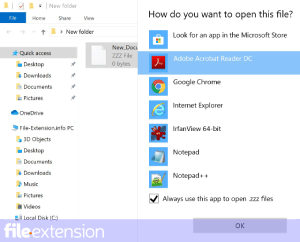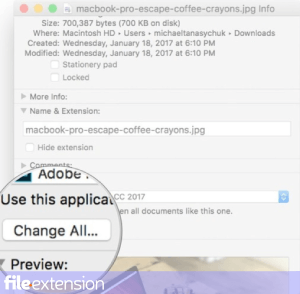
CLV File Extension
QIP Visible List
-
DeveloperIlgam Zulkorneev
-
Category
-
Popularity3 (1 votes)
What is CLV file?
CLV is a file extension commonly associated with QIP Visible List files. QIP Visible List specification was created by Ilgam Zulkorneev. CLV files are supported by software applications available for devices running . CLV file format, along with 1305 other file formats, belongs to the Settings Files category. QIP is by far the most used program for working with CLV files. Software named QIP was created by Ilgam Zulkorneev. In order to find more detailed information on the software and CLV files, check the developer’s official website.
Programs which support CLV file extension
Files with CLV suffix can be copied to any mobile device or system platform, but it may not be possible to open them properly on target system.
How to open file with CLV extension?
Being unable to open files with CLV extension can be have various origins. On the bright side, the most encountered issues pertaining to QIP Visible List files aren’t complex. In most cases they can be addressed swiftly and effectively without assistance from a specialist. We have prepared a listing of which will help you resolve your problems with CLV files.
Step 1. Download and install QIP
 The main and most frequent cause precluding users form opening CLV files is that no program that can handle CLV files is installed on user’s system. To address this issue, go to the QIP developer website, download the tool, and install it. It is that easy Above you will find a complete listing of programs that support CLV files, classified according to system platforms for which they are available. If you want to download QIP installer in the most secured manner, we suggest you visit Ilgam Zulkorneev website and download from their official repositories.
The main and most frequent cause precluding users form opening CLV files is that no program that can handle CLV files is installed on user’s system. To address this issue, go to the QIP developer website, download the tool, and install it. It is that easy Above you will find a complete listing of programs that support CLV files, classified according to system platforms for which they are available. If you want to download QIP installer in the most secured manner, we suggest you visit Ilgam Zulkorneev website and download from their official repositories.
Step 2. Check the version of QIP and update if needed
 If the problems with opening CLV files still occur even after installing QIP, it is possible that you have an outdated version of the software. Check the developer’s website whether a newer version of QIP is available. Sometimes software developers introduce new formats in place of that already supports along with newer versions of their applications. The reason that QIP cannot handle files with CLV may be that the software is outdated. All of the file formats that were handled just fine by the previous versions of given program should be also possible to open using QIP.
If the problems with opening CLV files still occur even after installing QIP, it is possible that you have an outdated version of the software. Check the developer’s website whether a newer version of QIP is available. Sometimes software developers introduce new formats in place of that already supports along with newer versions of their applications. The reason that QIP cannot handle files with CLV may be that the software is outdated. All of the file formats that were handled just fine by the previous versions of given program should be also possible to open using QIP.
Step 3. Assign QIP to CLV files
If you have the latest version of QIP installed and the problem persists, select it as the default program to be used to manage CLV on your device. The process of associating file formats with default application may differ in details depending on platform, but the basic procedure is very similar.

Change the default application in Windows
- Choose the entry from the file menu accessed by right-mouse clicking on the CLV file
- Select
- Finally select , point to the folder where QIP is installed, check the Always use this app to open CLV files box and conform your selection by clicking button

Change the default application in Mac OS
- From the drop-down menu, accessed by clicking the file with CLV extension, select
- Open the section by clicking its name
- From the list choose the appropriate program and confirm by clicking .
- Finally, a This change will be applied to all files with CLV extension message should pop-up. Click button in order to confirm your choice.
Step 4. Ensure that the CLV file is complete and free of errors
If you followed the instructions form the previous steps yet the issue is still not solved, you should verify the CLV file in question. Problems with opening the file may arise due to various reasons.

1. Check the CLV file for viruses or malware
If the file is infected, the malware that resides in the CLV file hinders attempts to open it. Scan the CLV file as well as your computer for malware or viruses. If the scanner detected that the CLV file is unsafe, proceed as instructed by the antivirus program to neutralize the threat.
2. Verify that the CLV file’s structure is intact
If you obtained the problematic CLV file from a third party, ask them to supply you with another copy. The file might have been copied erroneously and the data lost integrity, which precludes from accessing the file. When downloading the file with CLV extension from the internet an error may occurred resulting in incomplete file. Try downloading the file again.
3. Ensure that you have appropriate access rights
Sometimes in order to access files user need to have administrative privileges. Log out of your current account and log in to an account with sufficient access privileges. Then open the QIP Visible List file.
4. Verify that your device fulfills the requirements to be able to open QIP
If the systems has insufficient resources to open CLV files, try closing all currently running applications and try again.
5. Verify that your operating system and drivers are up to date
Up-to-date system and drivers not only makes your computer more secure, but also may solve problems with QIP Visible List file. It may be the case that the CLV files work properly with updated software that addresses some system bugs.
Do you want to help?
If you have additional information about the CLV file, we will be grateful if you share it with our users. To do this, use the form here and send us your information on CLV file.

 Windows
Windows 
